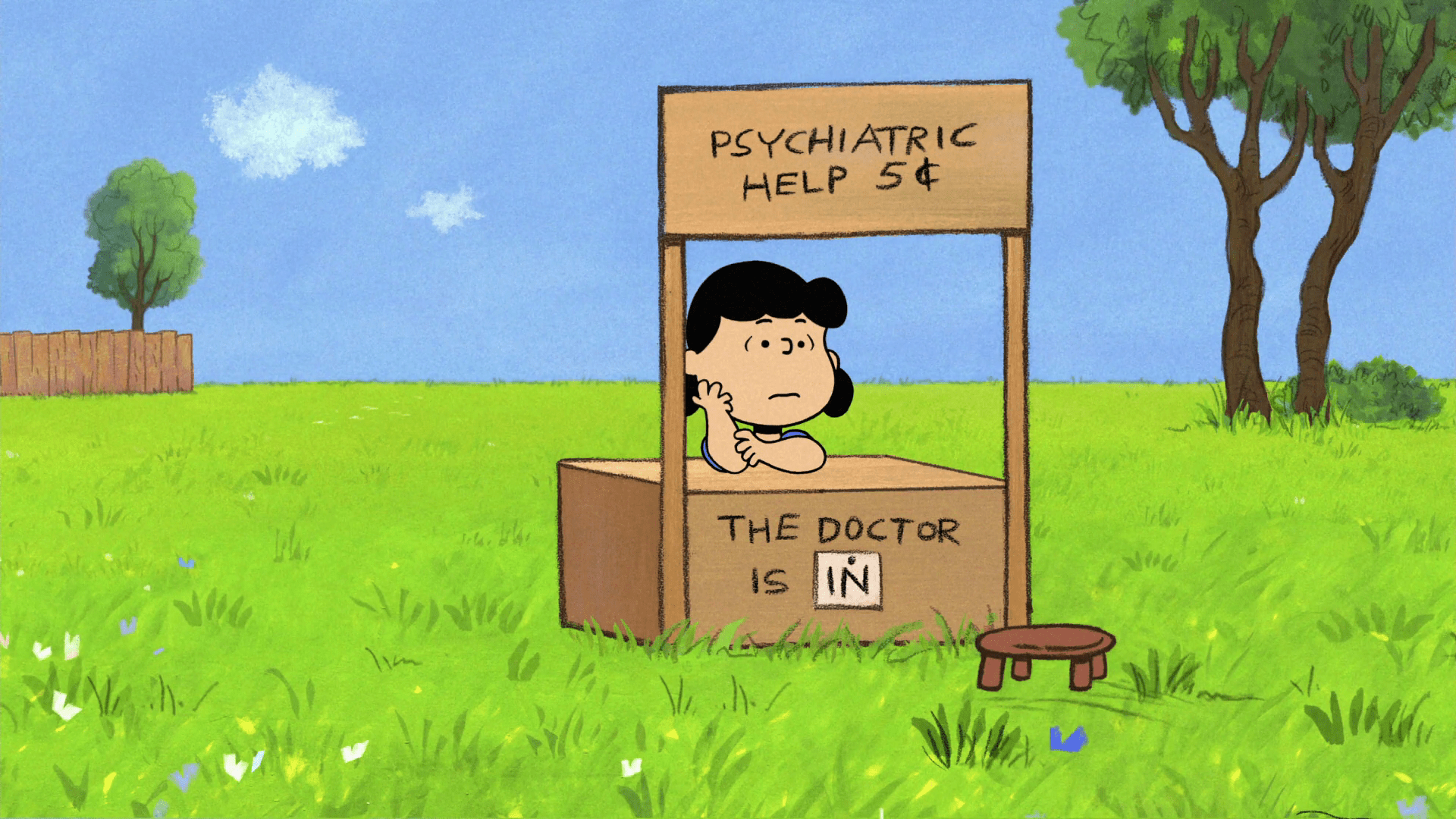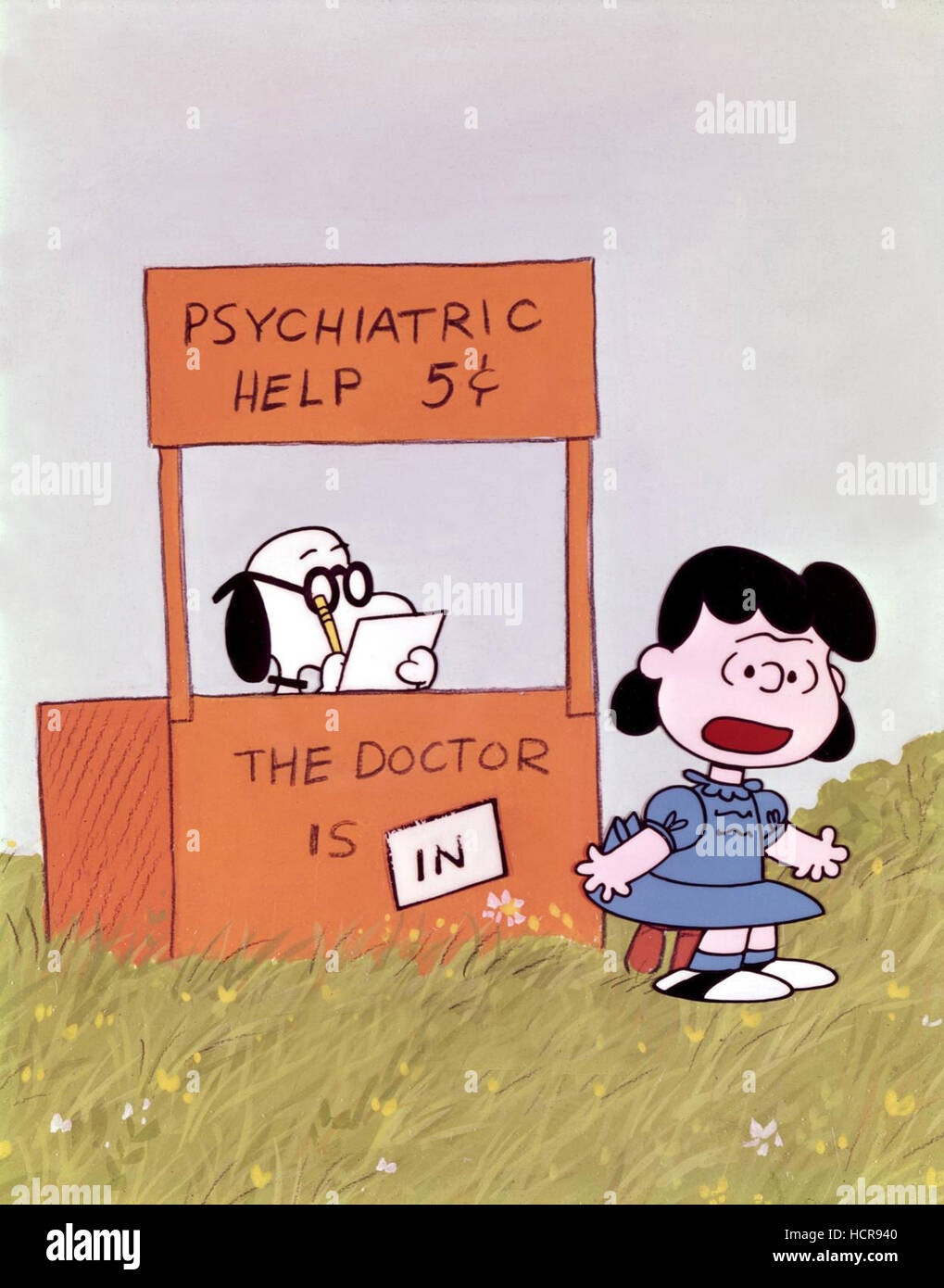When it comes to the world of "Peanuts," Lucy the Psychiatrist stands out as one of the most iconic and beloved characters. Created by Charles M. Schulz, this character has captured the hearts of readers and viewers alike with her wit and charm. Lucy's role as a psychiatrist, although fictional, offers a unique perspective on human behavior and relationships, making her an enduring figure in the comic strip.
Lucy's presence in the "Peanuts" universe is marked by her assertive personality and her distinctive role as a psychiatrist. This character adds depth and humor to the strip, often serving as a source of wisdom, albeit in a humorous and exaggerated manner. Her interactions with other characters, particularly Charlie Brown, provide valuable lessons on life and relationships.
Through Lucy's character, Schulz explores themes of self-confidence, friendship, and the complexities of human emotions. As we delve deeper into her role as a psychiatrist, we'll uncover the nuances that make her such a fascinating character in the "Peanuts" series.
Read also:Unveiling The Enchanting World Of Serita Jakes Candles
Biography of Lucy van Pelt
Before we dive into Lucy's role as a psychiatrist, let's explore her biography. Lucy van Pelt, born on March 3, 1952, is one of the central characters in the "Peanuts" comic strip. She is known for her bossy demeanor, sharp tongue, and her love for Schroeder.
Data and Facts
| Name | Lucy van Pelt |
|---|---|
| Birthdate | March 3, 1952 |
| Family | Linus van Pelt (brother), Rerun van Pelt (younger brother) |
| Hobbies | Playing football, bossing others around, pretending to be a psychiatrist |
| Interests | Schroeder, psychology, giving advice |
Lucy as a Psychiatrist: The Basics
Lucy's role as a psychiatrist is one of the most memorable aspects of her character. Although not a licensed professional, Lucy's "psychiatry" adds humor and depth to the "Peanuts" universe. Her five-cent psychiatric booth has become a symbol of her character's wit and charm.
Key Characteristics of Lucy's Practice
- She charges only five cents for her services, making her "practice" accessible to all her peers.
- Lucy's advice is often humorous and exaggerated, reflecting the lighthearted nature of the comic strip.
- Her interactions with Charlie Brown highlight her ability to both comfort and frustrate those seeking her counsel.
Psychological Insights from Lucy's Booth
Lucy's "psychiatric" advice, while not grounded in real psychology, offers valuable insights into human behavior. Her approach to counseling is often straightforward and humorous, reflecting the simplicity of childhood interactions.
Examples of Lucy's Wisdom
- Lucy often advises Charlie Brown to "kick the football" as a way to build confidence, despite her own ulterior motives.
- Her interactions with Schroeder reveal her understanding of love and rejection, showcasing the complexities of human emotions.
Lucy's Influence on Other Characters
Lucy's role as a psychiatrist has a significant impact on the other characters in the "Peanuts" universe. Her advice, whether taken seriously or not, influences the actions and decisions of her peers.
Impact on Charlie Brown
Charlie Brown's relationship with Lucy is one of the most dynamic in the series. Her constant teasing and occasional encouragement shape his character and provide valuable lessons on perseverance and self-confidence.
Historical Context of Lucy's Role
Lucy's role as a psychiatrist reflects the cultural and social context of the time when "Peanuts" was created. In the mid-20th century, psychology was gaining popularity, and Schulz used this trend to add depth to his characters.
Read also:John Mayer On Drugs A Comprehensive Look At The Controversy Recovery And Impact
Popularity of Psychology in the 1950s
The 1950s saw a rise in interest in psychology, with many people seeking professional help for personal issues. Schulz capitalized on this trend by creating Lucy's "psychiatric" booth, offering a humorous take on the growing field of mental health.
Lucy's Legacy in the "Peanuts" Universe
Lucy's legacy as a psychiatrist continues to influence the "Peanuts" universe. Her character has become synonymous with wit and wisdom, making her an enduring figure in the comic strip.
How Lucy's Character Evolved
Over the years, Lucy's character evolved from a simple bossy figure to a complex individual with a deep understanding of human emotions. Her interactions with other characters highlight her growth and development as a character.
Lessons from Lucy's Booth
Lucy's "psychiatric" booth offers valuable lessons on life and relationships. Her advice, while humorous, often contains kernels of truth that resonate with readers and viewers.
Key Lessons
- Confidence: Lucy encourages others to believe in themselves, even if her methods are unconventional.
- Empathy: Despite her tough exterior, Lucy shows empathy towards those seeking her counsel.
- Resilience: Her interactions with Charlie Brown highlight the importance of perseverance in the face of adversity.
References and Sources
Several sources provide valuable insights into Lucy's character and her role as a psychiatrist. These include:
Conclusion
Lucy the Psychiatrist is a fascinating character in the "Peanuts" universe, offering valuable insights into human behavior and relationships. Her interactions with other characters, particularly Charlie Brown, provide lessons on confidence, empathy, and resilience. As we reflect on her role as a psychiatrist, we can appreciate the humor and wisdom she brings to the comic strip.
We invite you to share your thoughts and experiences with Lucy's character in the comments below. Feel free to explore other articles on our site for more insights into the world of "Peanuts." Thank you for reading, and we hope you enjoyed this comprehensive look into Lucy the Psychiatrist!
Table of Contents
- Biography of Lucy van Pelt
- Lucy as a Psychiatrist: The Basics
- Psychological Insights from Lucy's Booth
- Lucy's Influence on Other Characters
- Historical Context of Lucy's Role
- Lucy's Legacy in the "Peanuts" Universe
- Lessons from Lucy's Booth
- References and Sources
- Conclusion


